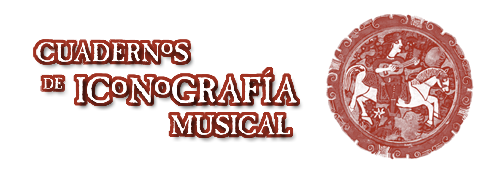Los nuevos medios digitales y la interpretación de una obra musical a través de imágenes: la saga del Erlkönig vista desde la historiografía crítica, el análisis musical y la hermenéutica*
Resumen
Utilizar imágenes con el fin de ilustrar la música mientras ésta deviene en el tiempo es una práctica cada día más usual. Se deriva de la marcha veloz de las tecnologías de edición, almacenamiento y coparticipación; un desarrollo que ha acelerado no sólo la producción audiovisual, sino la interrelación de material e ideas de muy distinta naturaleza y proveniencia. Para ahondar en estos temas y, al mismo tiempo, evitar caer en una discusión teórica alejada de la realidad, el presente artículo se concentra en un caso de estudio: la recepción iconográfica de Erlkönig, el lied opus 1 de Franz Schubert basado en la balada del mismo nombre de Goethe. La primera parte del artículo analiza imágenes que se han ido incorporando en la recepción del lied: se concentra en las nuevas formas de presentar la música, las cuales van desde la reutilización de un puñado de imágenes que acompaña el devenir musical hasta la elaboración de material nuevo en forma de video animado. La segunda parte estudia la relación estructural entre texto, música y video; las polémicas del pasado que resurgen y cómo el análisis armónico y el hermenéutico apoyan la interpretación de estos productos culturales.
Texto completo:
PDFReferencias
Abbate, C. (1989). What the Sorcerer Said. 19th–Century Music, 12(3), 221–230.
_______ (1991). Unsung Voices. Opera and Musical Narrative in the Nineteenth Century.
New Jersey: Princeton University Press.
Baldassarre, A. (1997). The Iconographic Schubert: The Reception of Schubert in the Mirror of His Time. RIdIM/RCMI Newsletter XXII(2), 39-52.
_______ (2009). Music Iconography: What is it all about? Some remarks and considerations with a selected Bibliography. Ictus, 9(2), 69–96.
Cone, E. (1974). The Composer’s Voice, Berkeley: University of California Press.
Dahlhaus. C. (1983). Foundations of Music History. Londres: Cambridge University Press.
________ (1989). Nineteenth–Century Music. Berkeley: University of California Press.
Gibbs, C. (1995). ‘Komm, geh’ mit mir’: Schubert’s Uncanny Erlkönig. 19th-Century Music, 19(2), 114–135.
________ (1992). The Presence of Erlkönig: Reception and Reworkings of a Schubert Lied. Tesis de doctorado, Columbia University.
Goethezeitportal (2015). Was ist das Goethezeitportal. Recuperado el 3 de octubre de 2015, de http://www.goethezeitportal.de/projekt-infos.html
Holt, F. (2011). Is music becoming more visual? Online video content in the music industry. Visual Studies, 26(1), 50–61.
Kerman, J. (1987). Listen Brief Edition. Nueva York: Worth Publishers, Inc.
________ (1990) (Ed.). Music at the Turn of Century. A 19th–Century Reader. Berkeley: University of California Press.
________ (1992). Listen Second Brief Edition. Nueva York: Worth Publishers.
Kerman, J. y Tomlinson, G. (2000). Listen Brief Fourth Edition. Boston: Bedford/St. Martin’s.
Kramer, L. (1984). Music and poetry: The Nineteenth Century and After. Berkeley: University of California.
________ (2002). Musical Meaning. Toward a Critical History. Berkeley: University of California.
Mc Daniel, M. E. (1973). Dramatic Expression in Thirty Musical Settings of Goethe’s ‘Der Erlkönig’. Tesis de maestría en música. North Texas State University.
McNamee, A. (1985). The Role of the Piano Introduction in Schubert’s Lieder. Musical Analysis, 4, 95–106.
Moore, W. C. (2012). Goethe Settings by Johann Friedrich Reichardt and Carl Friedrich Zelter: Text, Music and Performance Possibilities. Denton, Texas. UNT Digital Library.
OxfordLieder (2013). Recuperado el 18 de octubre de 2015, de www.Oxfordlieder.co.uk [Consulta: 18/10/2015]
Püttlingen, J. von (1858). Über den Erlkönig von Schubert. Monatsschrift für Theater und Musik 4, 585–588.
Ronyak, J. (2014). Studying the Lied: Hermeneutic Traditions and the Challenge of Performance. Journal of the American Musicological Society, 67(2), 543–582.
Recuperado el 11 de octubre de 2015, de http://digital.library.unt.edu/ark:/67531/metadc149641/
Sadie, S. y Latham, A. (1986). Stanley Sadie’s Music Guide. An introduction. Englewood Cliffs, N.J.: Prentice–Hall, Inc.
Taruskin. R. (2005), The Oxford History of Western Music. Volume 3. The Nineteenth Century. Nueva York: Oxford University Press.
Weigman, O. (1906). Schwind. Des Meisters Werke in 1265 Abbildungen. Stuttgart y Leipzig: Deutsche Verlags–Anstalt.
Wingmore, R. (1988). Schubert. The Complete Song Texts. Texts of the Lieder and Italian Songs, with English Translations. Nueva York: Schirmer.
Enlaces refback
- No hay ningún enlace refback.

